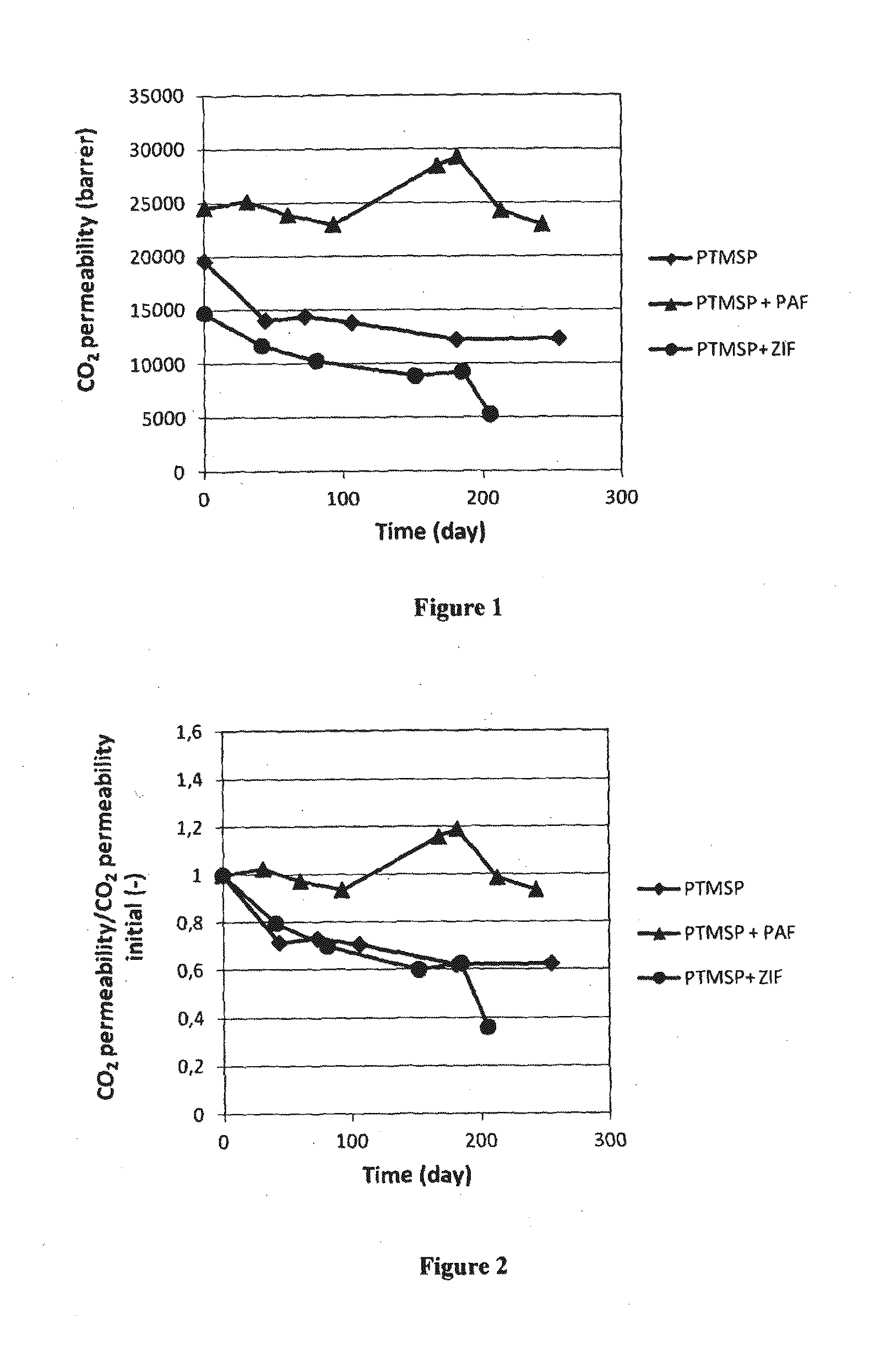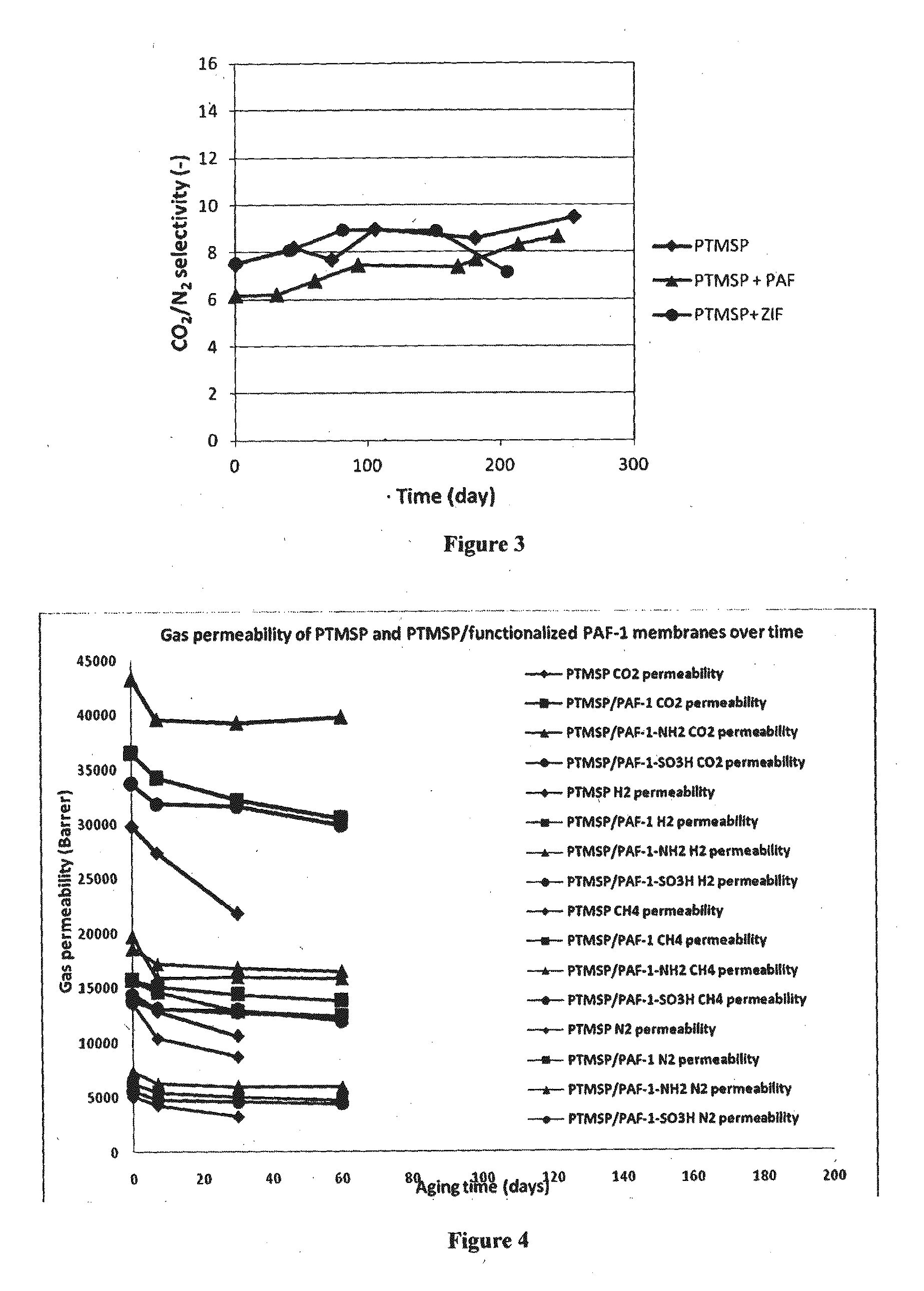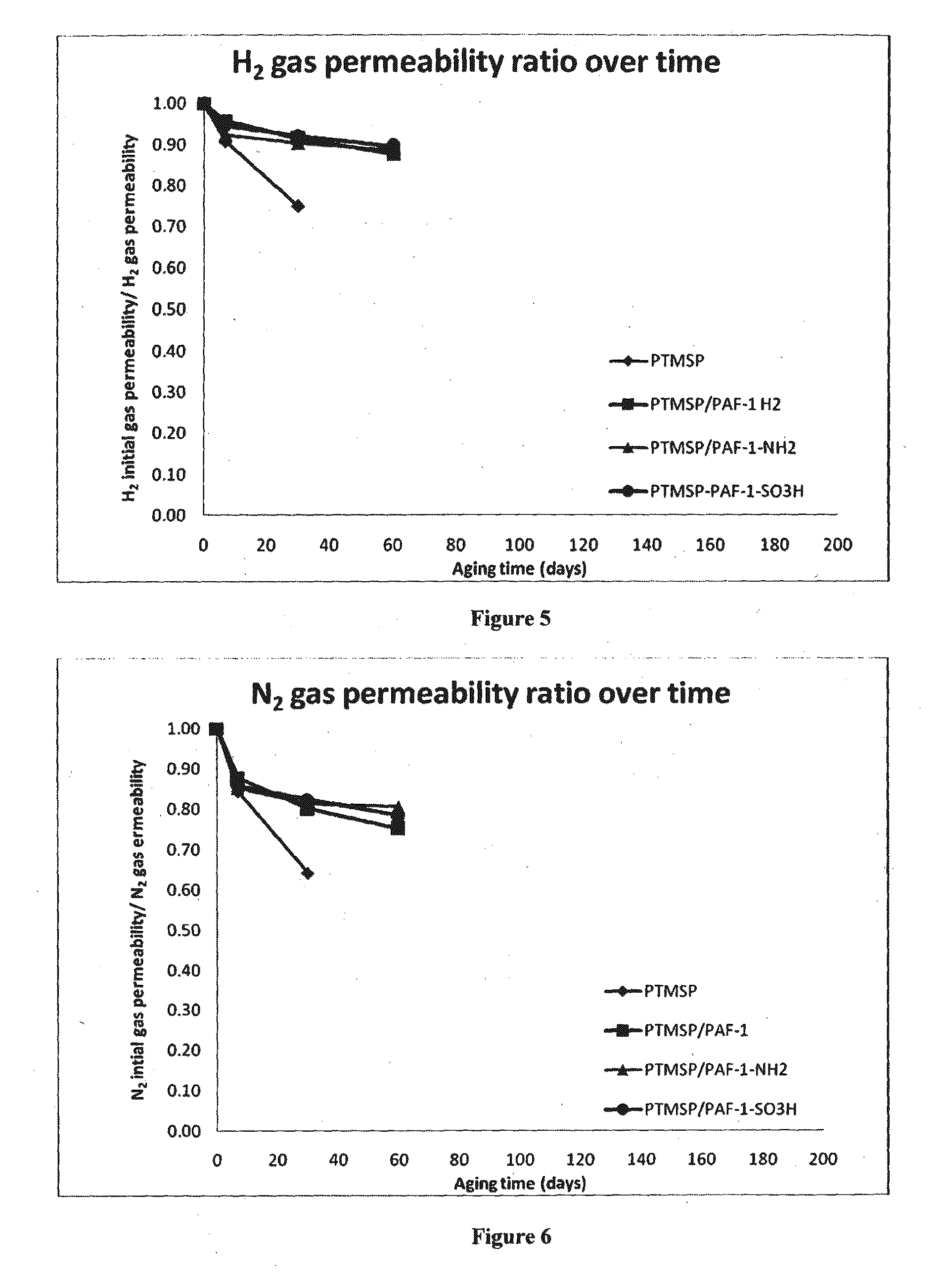Mixed matrix polymer compositions
a polymer composition and mixed matrix technology, applied in the field of mixed matrix polymer compositions, can solve the problems of dramatic reduction of available free volume, dramatic reduction of free volume, and tremendous decrease in gas permeability, and achieve the effects of increasing selectivity and permeability of mmm, and increasing porosity
- Summary
- Abstract
- Description
- Claims
- Application Information
AI Technical Summary
Benefits of technology
Problems solved by technology
Method used
Image
Examples
example 1
PTMSP / PAF-1 Composition
[0174]PAF-1 was synthesized according to previously reported methods (Konstas et al., 2012, Angew. Chem. Int'l Ed. 51(27):6639-6642; Ben et al., 2009, Angew. Chem. Int'l Ed. 48(50):9457-9460). The particle size was then reduced by cryo-grinding using an agate mortar and pestle in conjunction with liquid nitrogen. The material had a BET surface area of around 5,000 m2 / g with pores of 1.3 nm and mesopores of 4 nm.
[0175]ZIF-8 nanoparticles were synthesized through an adaptation of a previously reported method (Cravillon et al., 2011, Chem. Mat. 23(8):2130-2141), and were typically of 20 nm particle size.
[0176]MMMs were prepared by solvent casting. The different compounds—PTMSP and porous particles (PAF-1 or ZIF-8)—and THF were stirred at room temperature until complete dissolution of PTMSP and formation of a homogeneous solution. The membranes were casted on Teflon plates and dried until complete removal of the solvent. Details of the membranes are illustrated in...
example 2
[0177]CO2 and N2 permeabilities were measured over an extended period of time with a time-lag apparatus. As illustrated in FIG. 1, CO2 permeabilities were measured for neat PTMSP and mixed-matrix membranes. The initial permeabilities (t=0) were different due to differences in nature of the materials, casting conditions and thickness. For neat PTMSP and mixed-matrix membrane based on ZIF-8, a large decrease of the CO2 permeability was observed. The decrease observed (by nearly 40%) was typical for neat PTMSP membranes and demonstrates the need to stabilize the gas transport properties of the membrane over time. The CO2 permeability (25,000 Barrer) for the PTMSP / PAF-1 membrane was stable over at least 250 days (over 8 months).
[0178]FIG. 2 illustrates the ratio (CO2 permeability at time t / CO2 permeability at time t=0) over time. The results in FIG. 2 illustrate the distinctions among the three membranes: a significant decrease of the CO2 permeability was ob...
example 3
PTMSP / Functionalized PAF-1 Composition
[0181]PAF-1 was synthesized according to previously reported methods (Konstas et al., 2012, Angew. Chem. Int'l Ed. 51(27):6639-6642; Ben et al., 2009, Angew. Chem. Int'l Ed. 48(50):9457-9460). PAF-1 was functionalized as shown in Table 2, according to previously reported methods (Lu et al., 2011, J. Am. Chem. Soc. 133(45):18126-18129; Lu et al., 2012, Angew. Chem. Intl'l Ed. 51(30):7480-7484).
[0182]The functionalized material had a BET surface area of around 1,000 m2 / g (native material 2,300 m2 / g) with micropores of 1.1 nm (native material 1.3-1.4 nm) and mesopores of 2.7 nm. The changes in pore size and surface area are consistent with filling of micropores with functional groups and align well with previous reports (Zhou et al Adv Mater. 2011, 23, (32), 3723-3725).
[0183]MMMs were prepared by solvent casting. The different compounds—PTMSP and functionalized porous particles (PAF-1)—and chloroform were stirred at room temperature until complete ...
PUM
| Property | Measurement | Unit |
|---|---|---|
| size | aaaaa | aaaaa |
| size | aaaaa | aaaaa |
| median diameter | aaaaa | aaaaa |
Abstract
Description
Claims
Application Information
 Login to View More
Login to View More - R&D
- Intellectual Property
- Life Sciences
- Materials
- Tech Scout
- Unparalleled Data Quality
- Higher Quality Content
- 60% Fewer Hallucinations
Browse by: Latest US Patents, China's latest patents, Technical Efficacy Thesaurus, Application Domain, Technology Topic, Popular Technical Reports.
© 2025 PatSnap. All rights reserved.Legal|Privacy policy|Modern Slavery Act Transparency Statement|Sitemap|About US| Contact US: help@patsnap.com



